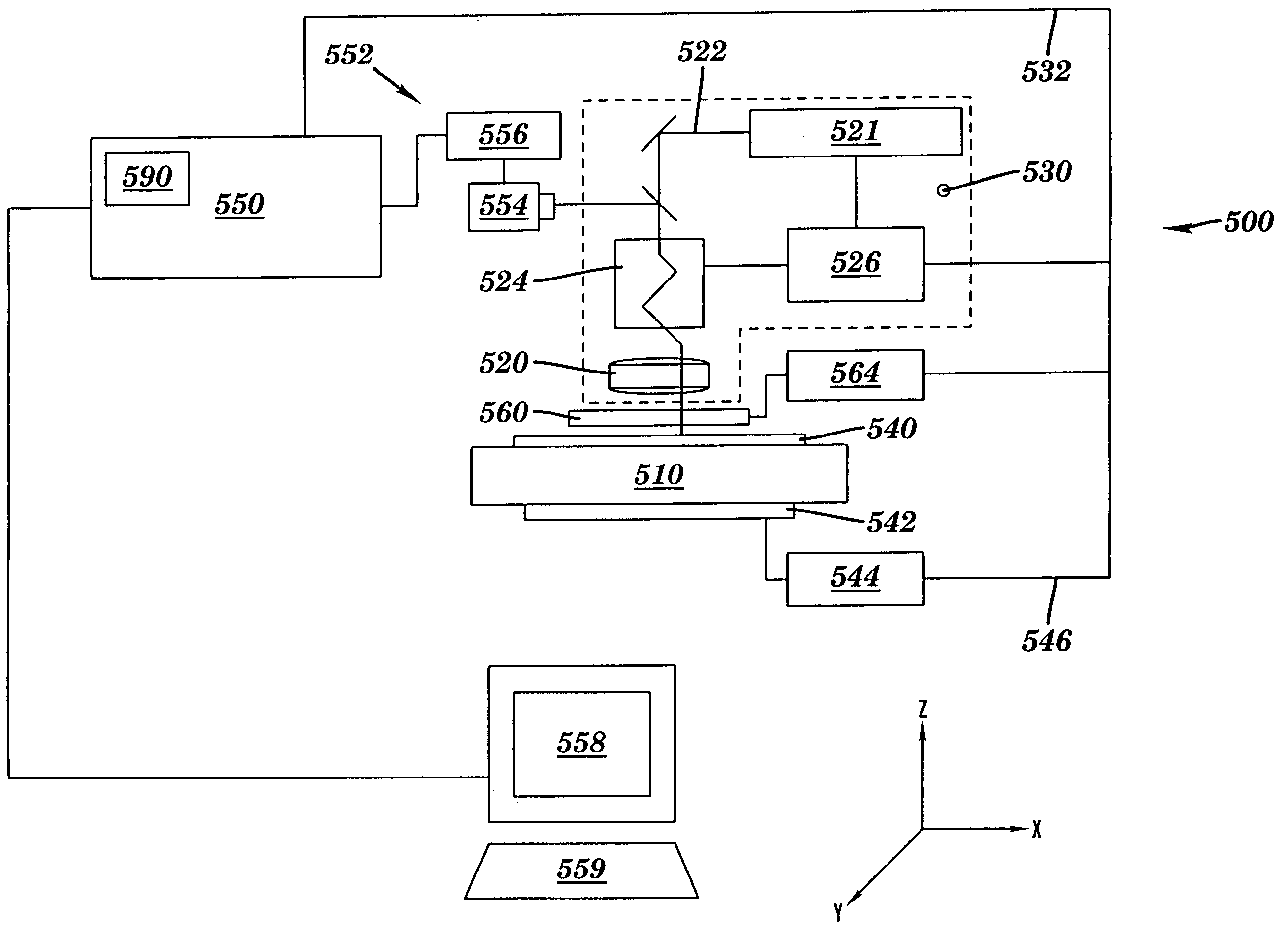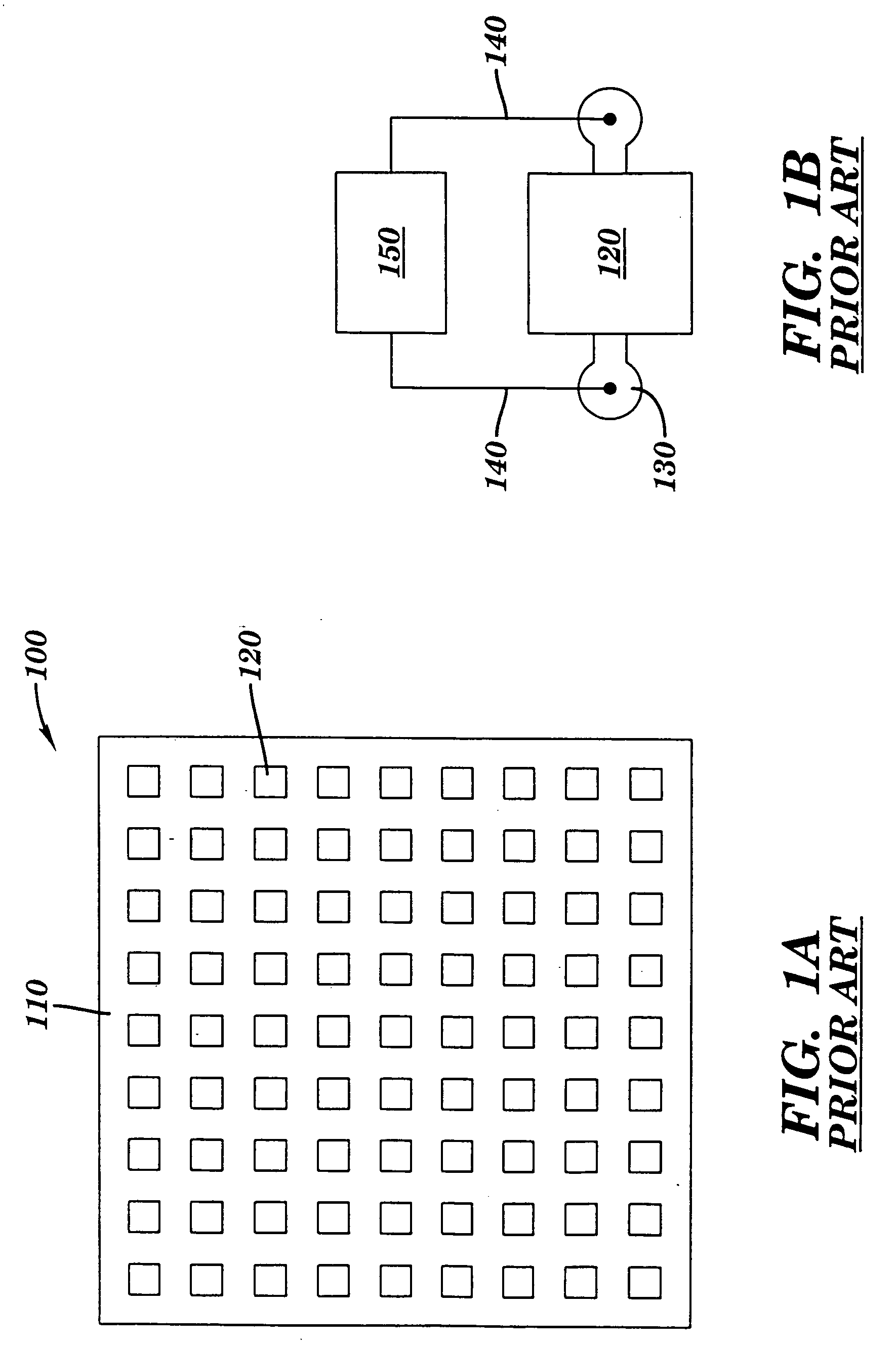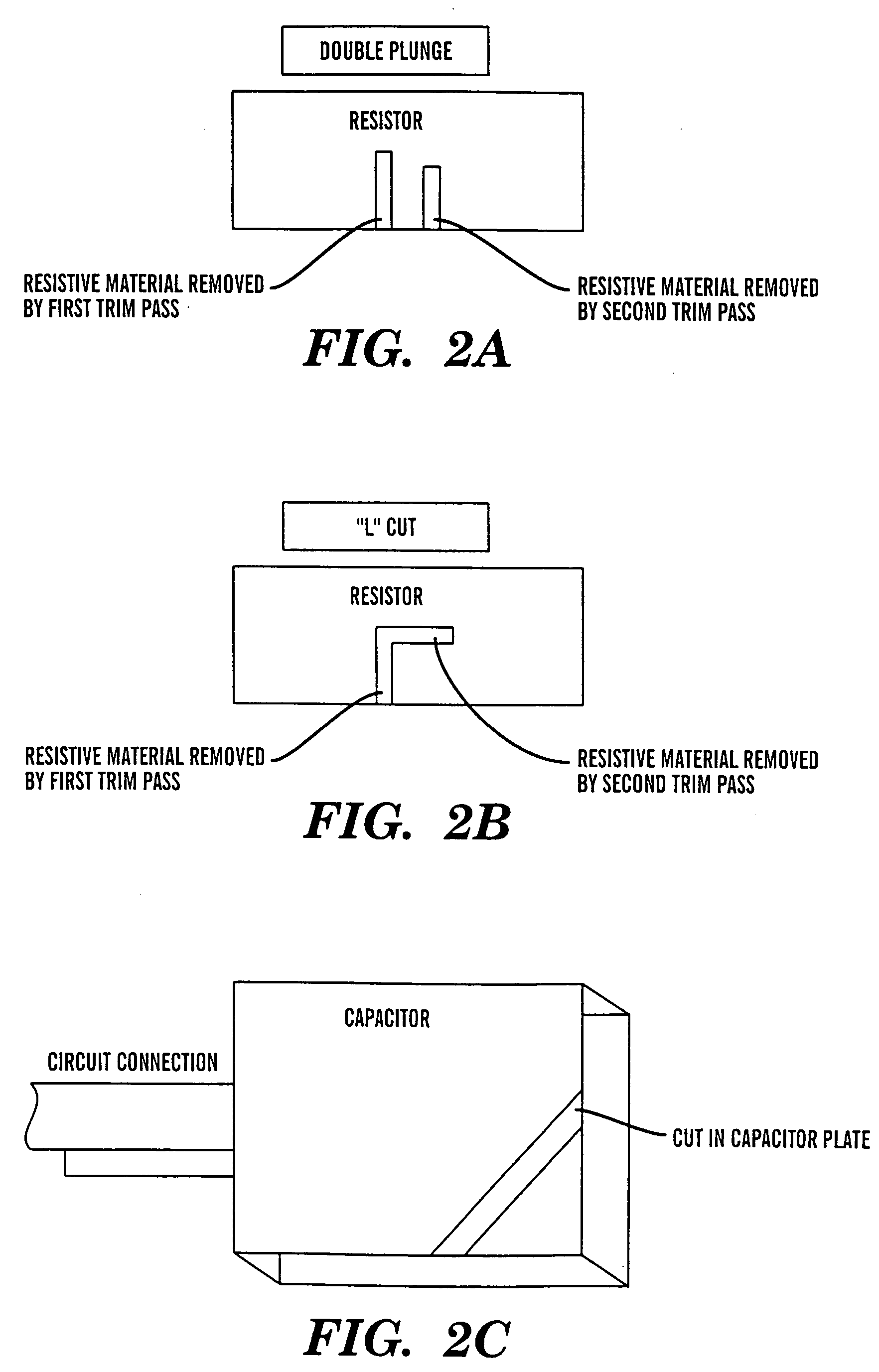Drift-sensitive laser trimming of circuit elements
- Summary
- Abstract
- Description
- Claims
- Application Information
AI Technical Summary
Benefits of technology
Problems solved by technology
Method used
Image
Examples
case 5
[0163] Case 5 is a particularly interesting example of an implementation in which no drift is allowed after lamination. As shown, initial indications are that untrimmed resistors have negative drift of about 4% after lamination. Laser trimmed resistors have positive, e.g. 4% to 8%, post-lamination drift. Thus, by choosing the correct trimming parameters the final drift can be reduced to substantially 0%.
[0164] It will be recognized that the trimming may be performed in multiple phases. That is, all passive elements may first be subjected to a rough trimming and then be subjected to a fine trimming after the rough trimmed elements have cooled.
[0165] Following determination of trim (cut) speed (bite size, spot size, and repetition rate) in step 1615, operations continue with FIG. 17. In step 1701 the position of the element in relation to the any conductors (copper traces) is determined. Typically this is done by doing a global alignment (3 or 4 point alignment) to determine where th...
PUM
| Property | Measurement | Unit |
|---|---|---|
| Dielectric polarization enthalpy | aaaaa | aaaaa |
| Electrical resistance | aaaaa | aaaaa |
| Electrical conductor | aaaaa | aaaaa |
Abstract
Description
Claims
Application Information
 Login to View More
Login to View More - R&D
- Intellectual Property
- Life Sciences
- Materials
- Tech Scout
- Unparalleled Data Quality
- Higher Quality Content
- 60% Fewer Hallucinations
Browse by: Latest US Patents, China's latest patents, Technical Efficacy Thesaurus, Application Domain, Technology Topic, Popular Technical Reports.
© 2025 PatSnap. All rights reserved.Legal|Privacy policy|Modern Slavery Act Transparency Statement|Sitemap|About US| Contact US: help@patsnap.com



